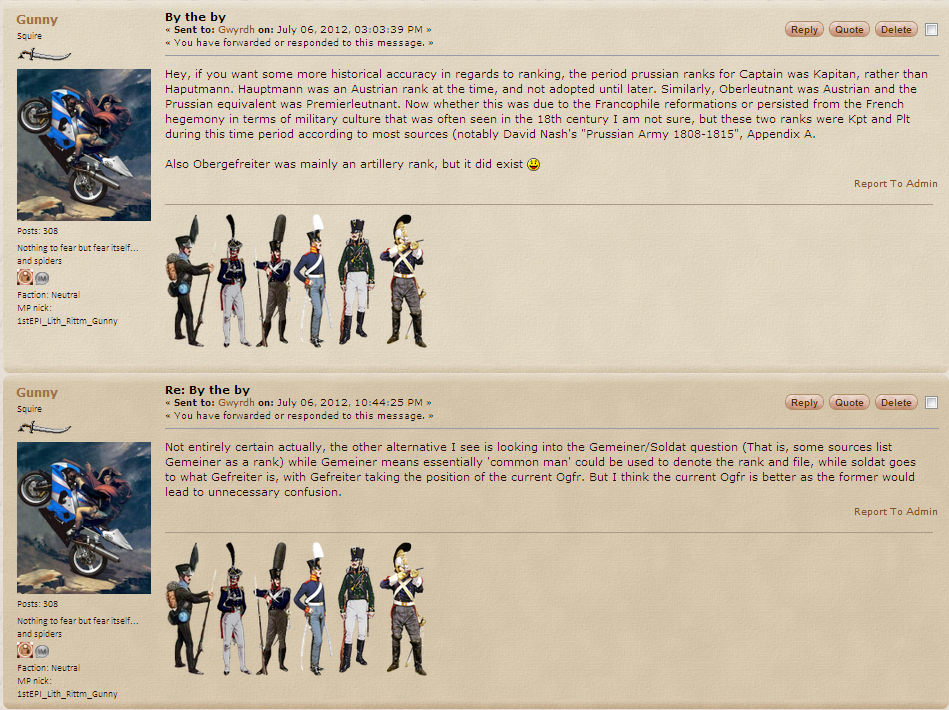Skass
Knight at Arms

Gwyrdh said:Skass said:Gwyrdh said:Skass said:Gwyrdh said:Fähnrich wasn't a rank used by the Prussians during the Napoleonic wars. As far as I am aware, and another one that is also used sometimes is Fähnenträger - a designation not a rank. Also, Oberleutnant is Premierleutnant, and Hauptmann is Kapitän, and Leutnant is Leutnant not Secondleutnant. In fact I'll post as many ranks as I know here. Oberleutnant and Hauptmann were Austrian ranks.
Prussia:
Gemeiner
Korporal (Gefreiter was an artillery rank mostly)
Unteroffizier
Feldwebel
Leutnant
Premierleutnant
Kapitän
Major
Oberstleutnant
Oberst
And France:
Soldat/Garde etc.
Caporal
Caporal Fourier
Sergent
Sergent Major
Adjudant
Adjudant Chef
Sous Lieutenant
Lieutenant
Capitaine
Chef de Bataillon (Major)
Colonel en Second
Colonel
I'm pretty sure these are right. I hope, anyway.
Menelaos16 said:The prussian ranks are correct!
If your looking for an entry rank then use "Rekrut" not accurate but adds more enlisted ranks.
nope.avi
Infact Gefreiter was first introduced to the Infantry, the first soldier of every file was supposed to be a Gefreiter. What you mgith eman is Obergefreiter which was mainly used for artillery purposes, but was introduced abotu 50 years later.
Thansk for your suggestions though, i might change it though if you give me any proof.
For a start Fähnrich wasn't introduced until WW2.
Evidence (from the EPI guys who know their stuff):

Also, Secondleutnant, Second is not even a word in German, if it was literally translated as 2nd Lieutenant it would be Zweite Leutnant.
I'm German, i know my native language quite well
Though the Prussians tended to use French Ranks since Frederick the Great and i have no proof that that had completely changed in the Napoleonic Wars (though its imaginable of course).
And Fähnrich was introduced as batallions were introduced, it was a officer rank till 1807, then the highest NCO rank. For instance, german Wikipedia.
http://de.wikipedia.org/wiki/Preu%C3%9Fische_Armee
And please dont use other people in the Forums as Sources, even if they're propably very well informed
If you read it he clearly states his information is form another reliable source. Just because you speak the language natively doesn't mean you know it's history and ranks perfectly, does it?
I don't know jack **** about artillery or cavalry ranks despite being English. Your point is invalid.
hey hey, no need to argue
I was just referring to the "Zweite Leutnatn" what soudns quite funny and i was referring to that im aware that "seconde" is nto a word in german












